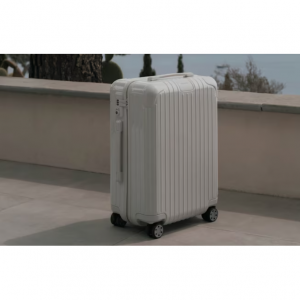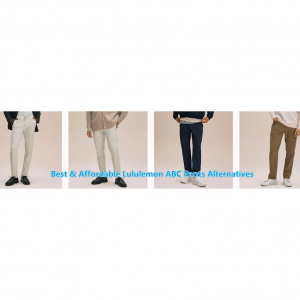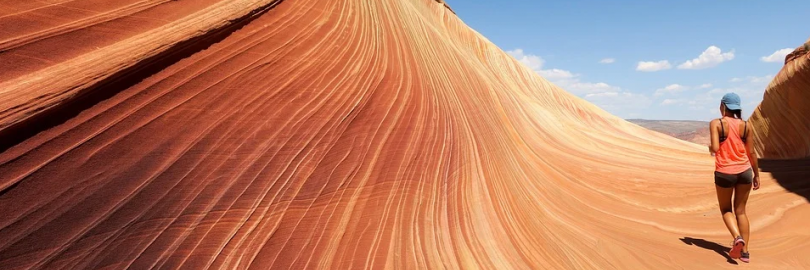
The Ultimate Los Angeles to Zion & Bryce Canyon National Parks Road Trip Itinerary in 2025
Best Time to Visit Zion and Bryce Canyon National Parks
Zion and Bryce Canyon National Parks are open every day of the year, 24 hours a day. The most popular months to visit are April through October, when the shuttle busses are running in Zion Canyon. Once the shuttles are discontinued (November through March), you're allowed to use your own vehicle to explore this beautiful stretch of road at your own pace. So there are also plenty of people visit the parks in Winter.
Spring, summer and fall will be more crowded than winter. Because spring runoff can make canyon hiking difficult or impossible, and summer temperatures can make hiking at midday uncomfortable or worse, fall is the best time to visit Zion if you're a serious hiker. On top of that, the fall colors make the park look amazing, and although crowds are still present, they're less prevalent than in the summer. Simply put, though, there really isn’t a bad time of year to visit Zion National Park. It largely depends on your preferences for activities and crowds.
Los Angeles to Zion and Bryce Canyon National Parks
Los Angeles to Zion National Park
The road trip from Los Angeles to Zion National Park spans 430 miles and takes just over 6 hours with the standard gas and lunch breaks. This means you can take off in the morning and make it to Zion reasonably early, even with one or two longer stops.
However, there are simply too many amazing places to check out on the way, so to really make the most of this trip, you should make at least one overnight stop at Las Vegas (essentially the midpoint of the route) or even at one of the smaller towns near a major park.
You'll generally be driving through desert terrain, so congestion shouldn't be a problem for the most part. Bear in mind, however, that leaving Los Angeles or driving through Las Vegas on a weekend or holiday could get you stuck in traffic, adding an hour or two to your travel time.

Zion National Park to Bryce Canyon National Park
The drive from Zion National Park in Bryce Canyon National Park is about 73 miles and just under 2 hours. Don’t miss scenic stops along the way like Checkerboard Mesa and Red Canyon.

Best Places to Stop Between Los Angeles and Zion National Park
For people who appreciate the elegance of a desert trip, there's far too much to see along this route to power through it in one day – you'll definitely want to consider booking a hotel and exploring at your own pace. If you have not been to death valley, you can consider spending the night near death valley. If you are not interested in death valley, you can drive directly to Las Vegas to rest for a night.
Death Valley
Death Valley National Park is all about extremes. Famous for the highest temperature ever recorded anywhere in the world (a sizzling 134 degrees in July 1936) and as the driest spot in North America, from autumn into spring Death Valley is inviting to explore. Come here to hike through colorful canyons and to see such landmarks as Badwater Basin—at 282 feet below sea level, it’s the lowest point in North America. You can do these things in Death Valley National Park:
1. Catch Sunrise at Zabriskie Point
2. Learn About the Park at Furnace Creek Visitor Center
3. Take a Drive Down Badwater Road
4. Discover a Rainbow of Rocks on Artist’s Drive
5. See a Spring Bloom of Wildflowers
6. Head Into the High Country at Dante’s View
7. Look for Wildlife in the Mesquite Flat Dunes
8. Walk Along the Rim of a Volcano
Where to Stay in Death Valley National Park?
We highly recommend the The Inn at Death Valley.

Located within Death Valley National Park, The Inn at Death Valley features a 24-hour front desk. This property also provides guests with an outdoor pool. Guests can have a drink at the bar.
All units in the hotel are equipped with a flat-screen TV with cable channels. Rooms are complete with a private bathroom fitted with a shower. All rooms at The Inn at Death Valley include air conditioning and a desk.
At the accommodations you will find a restaurant serving American cuisine. A vegetarian option can also be requested.
The Inn at Death Valley offers a range of wellness facilities including a sauna and a fitness center. The area is popular for cycling, hiking and golfing.
Other services and facilities offered at The Inn at Death Valley include a business center, an ATM machine, newspapers and a fax machine and photocopier.
Find the best vacation hotel deals and book yours at Booking.com, Hotels.com, Orbitz.com, Expedia, Trip.com, Travelocity, Trip.com & TripAdvisor. and don't forget to sign up at Extrabux (What is Extrabux?) , then you can get up to 4% super cashback from Extrabux! Sign-Up Bonus: Free to join it & get $20 welcome bonus!
Las Vegas
Las Vegas, city, seat (1909) of Clark county, southeastern Nevada, U.S. The only major city in the American West to have been founded in the 20th century, Las Vegas grew from a tiny, desert-bound railroad service centre at the outset of the 20th century to the country’s fastest-growing metropolis at century’s end.
Las Vegas is a city that was made for entertainment, carved out of the Mojave Desert with escape in mind. Millions of people visit Las Vegas annually to relax, dine, shop, see performers, experience the nightlife and, of course, enjoy a go at the gaming tables.
Where to Stay in Las Vegas?
We highly recommend the The Venetian Resort Las Vegas.

The Venetian brings the soul of Renaissance Venice to Las Vegas. An integrated resort, The Venetian offers all the romance and grandeur of its namesake and more. USA Today calls it “the most romantic hotel in Las Vegas.”
At The Venetian, every key unlocks a suite. Roughly twice the size of the average hotel room, each suite features an all-Italian-marble bath, sunken living room with sofa and armchairs, and much more. Just steps outside these incomparable suites wait the world’s most sought-after chefs, entertainers, shopping, and amenities. These are just a few of the reasons why San Diego Magazine named The Venetian “best Las Vegas hotel.”
From moment to moment, no other hotel can deliver the same exciting and rewarding experiences of The Venetian. For those who live for excitement amid luxurious surroundings, The Venetian delivers on every promise it makes and is the premier destination for those who love to live richly.
Top Things to do in Zion National Park
There are many things to do in Zion National Park. Here we recommend top attractions in Zion National Park for you.
1. The Narrows
Fee: free
Time: 1 to 2 hours
The Narrows, or more formally, the narrows of the North Fork of the Virgin River, has become one of the most famous hikes in the world, and for good reason. It is Zion's hallmark hike. For beginner and intermediate hikers, it can be quite a challenging adventure. Fit, experienced hikers will be wowed by the soaring sandstone walls and the novelty of walking IN the river for miles at a time. Whether done as an overnight through-hike, from the top down as a dayhike, or from the bottom up, the Zion Narrows hike is a classic not to be missed.

2. Zion Canyon Scenic Drive
Fee: A fee is charged to drive through the park.
Time: 1 to 2 hours.
This scenic byway runs for 54 miles.
From the west, you get on the byway at the intersection of Hwy 9 and Interstate 15, about 9 miles east of St. George. On the east, the Byway ends at Hwy 89, at Mt Carmel Junction.
Hwy 9 is the major road providing access to Zion National Park. It winds past the park visitor center and museum, and past many famous Zion landmarks. It provides access to Zion Canyon (accessible by shuttle only during the tourist season) and then goes through the park's mile-long tunnel. It cuts through the park's Checkerboard Mesa area and then ends at Hwy 89 at Mt Carmel Junction.
The byway parallels the Virgin River in many areas. Near I-15, it provides access to Quail Creek and Sand Hollow Utah State Parks. It cuts through the towns of Hurricane, Virgin, Rockville, and Springdale before entering the Park.
Near Rockville, it provides access to Grafton ghost town, a photogenic site that was featured prominently in the movie "Butch Cassidy and the Sundance Kid."
Note: Large vehicles and RVs are required to pay an escort fee to travel through the Zion Tunnel.
You can drive this byway as part of a loop, circling north and returning via Hwy 14 over Cedar Mountain, or circling south and returning via Hwy 89 through Kanab and Fredonia, and then Hwy 389 through Colorado City to Hurricane.
Many people explore Zion Park and then drive the byway as they continue their trip, heading to Grand Canyon, Lake Powell, Bryce Canyon or other area attractions.

3. Angel's Landing
Fee: free
Time: half day to full day
Angel's Landing is one of Zion's most spectular scenic outlooks; it can be reached only by a very demanding hike on the West Rim Trail.
Like its name alludes, the Angels Landing trail concludes at an elevated perch. Travelers will ascend 1,488 feet during the 5-mile round-trip hike, some of which features sheer cliffs and steep switchbacks that might make it mentally challenging to those with an aversion to heights. Those hikers should turnaround at Scout Lookout (which is also where the trail's restrooms are located), as the last bit of the trail to the landing involves grasping chains to keep your footing on the sheer drop-offs.
We suggest tackling the hike midweek, since the trail gets crowded on weekends.

4. Canyon Overlook Trail
Fee: free
Time: 1 to 2 hours
The Canyon Overlook Trail offers some of the most breathtaking views of Zion Canyon. Located in the Upper East Canyon portion of the park, the trail is actually one of the few official trails in the area. This unfortunately means that the shuttle does not stop at this trailhead. To do this hike, you must enter the park in a private vehicle.
You’ll be able to see the overlook from the switchbacks on Route 9. After going through the tunnel, the trailhead parking area is on your right. Parking is extremely limited here, but there are overflow lots further down the road.
The trailhead is a collection of stone steps that ascend the ridge directly across the road from the first parking area. The trail passes through shaded alcoves with ferns and trees, across a planked boardwalk and through a moist grotto, and over bare slick rock, wandering its way to the edge of an impressive cliff overlook. Although mostly flat and easy, there are sections with steep drop offs on one side. These sections have railings, but those with children should be careful.
You can see the expanse of Zion Canyon from the overlook, with its monumental formations visible on either side. You can see the road as it switchbacks below the west end of the Mount Carmel Tunnel. The West Temple, Towers of the Virgins, Streaked Wall, and Beehives all make up part of this tremendous view. The East Temple rises directly above the overlook, towering more than 2,200 ft above the canyon floor. The Great Arch lies recessed into the cliff-face below the overlook.

5. Observation Point
Fee: free
Time: 2 hours to half day
At 6,521 feet in elevation atop Mount Baldy, and jutting out into one of the widest sections of Zion Canyon, right around the Big Bend, Observation Point commands a view of nearly every major attraction in the canyon. Hikers receive a spectacular vista of the lower end of Zion Canyon, with view out farther than the mouth of the canyon. The hike itself is very steep, with short sections of inviting, level strolls through beautiful Echo Canyon. Hikers ascend nearly 2,000 feet during this trek; this is definitely not a trip for the casual, ridiculously-out-of-shape tourist. However, if paced properly, and well-hydrated, this can be a fun, challenging hike that will leave satisfaction, both in memory, and in photographic record.

Top Things to do in Zion National Park
1. Navajo/Queens Garden Loop
Fee: free
Time: 1 to 2 hours
Navajo Loop and Queen's Garden Trail is a 2.9 mile heavily trafficked loop trail located near Bryce, Utah that offers the chance to see wildlife and is rated as moderate. The trail is primarily used for hiking and nature trips and is best used from March until October.

2. Sunset Point
Sunset Point offers vistas of some of the most famous and breathtaking of Bryce Canyon's hoodoos. Directly below the point and to the south, the Silent City rises from the canyon floor, a maze of hoodoos and fins packed in tight formation. Just below the overlook on the northern edge, Thor's Hammer stands alone. Striking in form due to its isolation from other hoodoos, Thor's Hammer is a favorite among visitors.

3. Inspiration Point
Stand perched high above the many levels of hoodoos that fill the canyon to the brim! Gawk at the layers of red and white rock that have been eroded away, and have fun fnding unique shapes and characters among the formations.
What You Need to Know
Inspiration Point consists of three viewpoints, each one gaining elevation and providing a more spectacular view. You do not need to do all three if you are not able .... great photo op awaits you at any of the three areas. I recommend hiking all the way to the top if you can.
Getting Here
From the Visitor Center, drive approximately 1.5 miles south to the turnoff for Inspiration Point. Take a left, and then another left soon after to reach the viewpoint.

4. Sunrise Point
This scenic point offers not only amazing views but some of the more fancifully named formations in the park. Visitors have views of the Boat Mesa and the Sinking Ship, which are set against the Pink Cliffs of the Aquarius Plateau. Boat Mesa is topped by the resistant rock called "The Conglomerate at Boat Mesa" and rises above the hoodoos of Fairyland Canyon to 8,073 feet. Don't worry; these names make sense when you see the formations.
Sunrise Point is the trailhead for the easy 1.8-mile Queens Garden Trail that descends into a section of hoodoos, which are naturally ruled by the Queen Victoria hoodoo (hence the name). Sunrise is also the end point of the Navajo Loop and Queen Victoria combination, one of the most popular hikes in the park. Past visitors said this is a superb lookout with spectacular sunrises. However, if you can't make it for sunrise, rest assured the beauty and colors are incredible at all hours of the day, according to recent travelers.

5. Bryce Point
This is the place to savor views over the park’s amphitheater, especially at sunrise, where the hoodoos are positioned to catch morning light. The Peek-a-Boo Loop Trail descends from this point. Are you a hard-core backpacker? The Under-the-Rim 23-mile backcountry trail extends from Bryce Point in the park’s northern end to Rainbow Point on the southern, passing hoodoos, boulderfields, creeks, and scenic ridgelines. Dayhikers can sample portions of the trail, but hiking the whole thing requires three to four days and a backcountry permit.
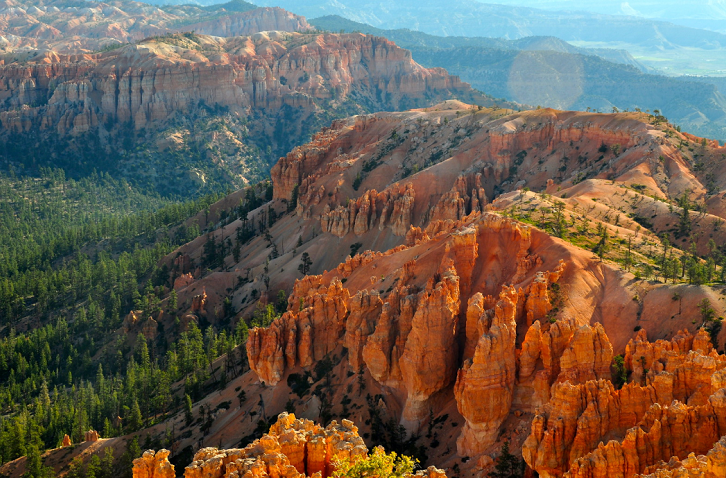
Travel Tips
1. Tips for Hiking in Arid Lands
Hiking in Zion National Park and surrounding areas poses challenges that are encountered nowhere else. Much of southwestern Utah’s public land is free of conventional trails, and hikers may have to rely on their map and compass skills to find their way. The defining feature of the region is “slickrock,” in which vast expanses of sculpted sandstone have been scoured bare by wind and water.
As its name suggests, slickrock can be very slippery when it gets wet. Trails and routes that cross slickrock will be marked only with cairns, if they are marked at all. Hikers who travel through canyons should remain constantly aware that it is much easier to climb up a slickrock face than it is to descend one. Local Search and Rescue teams are routinely called to rescue hikers who ventured up onto ledges from which it was impossible to descend.
2. Be Aware of the Weather
Perhaps the most obvious challenge in desert hiking is the extreme weather. During the hottest parts of the day, the temperature can reach 120°F several feet above the floor of the low desert. Summer hikers should wear broad-brimmed hats, long-sleeved shirts, and baggy pants to protect themselves from the intensity of the desert sun. Cover exposed skin with sunscreen lotion. Take a lesson from the local wildlife and hike in the cool of the mornings and evenings, and rest in the shade during the heat of the day.
3. Drink Plenty of Water
Perhaps one of the most important Zion National Park tips is to drink lots of water. The desert air wicks moisture away from the body at an amazing rate, and active hikers should plan to drink about a gallon of water per day during their trip. Desert water sources may run dry for part of the year and often contain exotic microbes that can cause intestinal disorders. Always carry enough water to meet your daily needs, and filter all surface water to remove the harmful microbes.
4. Avoid Stings and Bites
Many desert-dwelling animals have evolved poisons, and they may bite or sting when provoked. The rattlesnake is the most notorious of these, although its reputation for aggressiveness is undeserved. This nocturnal predator will flee when given a chance, and it rarely bites unless it is surprised or cornered. To avoid snakebites always watch where you put your hands and feet and avoid reaching into dark places or overturning boulders. This practice will also help you avoid scorpions, most of which have painful stings. Scorpions like to hide in dark, moist places; hikers who leave their boots outside overnight may be in for a nasty surprise in the morning.
Anti-Mosquito Products
1. Ben's Tick & Insect Repellent Wipes, 30% Deet
Ben's 30%-DEET mosquito, tick and insect repellent offers protection from insects that may carry West Nile Virus, Eastern Equine Encephalitis, Lyme Disease, Dengue Fever, and other infectious diseases. Providing up to 8 hours of effective protection, Ben's 30%-DEET unique formula is made to evaporate slowly - so repellent stays on longer with little absorption into the skin. Individually wrapped wipes let you control the amount and location of repellent to apply.

Where to buy anti-mosquito products?
You can go to Walgreens or Walmart through Extrabux, then you can get up to 6% super cashback.
2. Sawyer Products 20% Picaridin Insect Repellent
Sawyer's 20% Picaridin Insect Repellent is a promising new repellent. Its effect is similar to DEET, yet it is safer on gear and equipment than DEET. At 20 percent, this long lasting topical insect repellent is effective up to 12 hours against mosquitoes, and ticks, and 8 hours against biting flies, gnats, chiggers and fleas. Picaridin is more effective at repelling biting flies than DEET. It is effective against mosquitoes that may carry the Zika Virus, West Nile Virus, Chikungungya, and Dengue Fever. This 20 percent Picaridin is virtually odorless. It has a mild citrus scent added to it which quickly evaporates away.

3. OFF! FamilyCare Picaridin Insect Repellent Aerosol VIII
OFF! FamilyCare Insect Repellent Aerosol VIII is formulated with 10% Picaridin, and repels mosquitoes. It's an easy-to-apply aerosol spray that's not oily or greasy, and will not damage fabrics or plastics. With this Picaridin insect spray you will resolve your mosquito problem quickly and effectively, so you can keep living life your way.

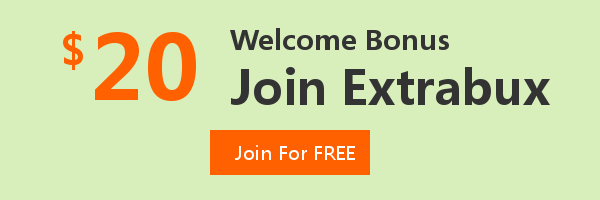
Extrabux is an international cashback shopping site, offering up to 30% cashback from 10,000+ Stores!
Booking.com, Ripley's Aquarium, Marriott, Pontins, Trip.com, Ripley's Myrtle Beach, The Brehon, ebookers, Away Resorts, Gleneagle Hotel, Agoda, Extended Stay America, Worldwide Insure, Malmaison, Scotts Hotel, Priceline, Zafiro Hotels UK, TurnKey Vacation Rentals, Discovery Cove, etc.
Join to get $20 welcome bonus now! (How does Welcome Bonus work?)
Recommendation
-

Is Turkish Airlines Good for International Flights?
-

10 Best & Stylish Winter Coats for Women on NET-A-PORTER in 2025
-

Top & Best 12 Sneaker Apps/Websites for Raffles, Releases & Restocks in 2025
-

7 Best Gift Card Exchange Sites - Buy, Sell and Trade Discount Gift Card Safely and Instanly!
-
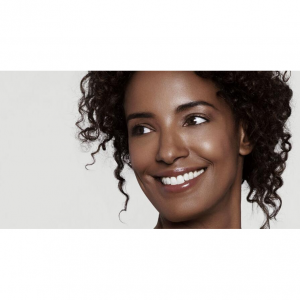
Top 9 Professional Skincare Brands for Licensed Estheticians 2025

